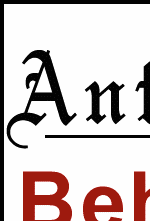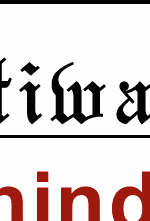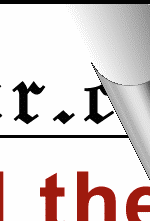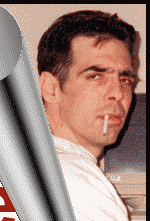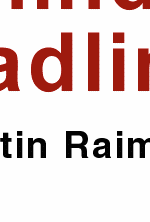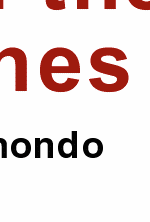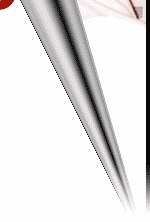|
For
as long as the cold war lasted, the history of the conservative
movement before about 1955 – the history of what I call
the Old Right – was for the most part ignored: when they
talked about it at all, historians of both the left and the
right invariably dismissed it as too politically incorrect
to be discussed, let alone taken seriously. But the conservative
response to the New Deal and the looming prospect of war produced
a powerful and very well-organized movement whose active adherents
numbered in the millions – and who almost saved our Republic
from taking a giant step on the road to Empire.
The Old
Right was a coalition of conservative businessmen, progressive
Republicans in Congress; and disillusioned liberals who were
alarmed by the militaristic and corporatist direction the
New Deal was taking. All of these elements had their grievances
against FDR – the court-packing controversy, the fascist-style
of the National Recovery Act, the massive and unprecedented
centralization of power in Washington – but they all
came together in the great antiwar movement of the late 1930s,
the America First Committee.
In the
winter of 1940, as Hitler's armies were crashing through France,
devouring the Low Countries, and threatening to invade England,
the interventionist chorus became a deafening roar: every
Anglophile, every left-wing "antifascist," every friend of
the Soviet Union was raising his or her voice – America,
they declared, must intervene and save the West from the dreaded
Hun! American public opinion – up until this point decidedly
and overwhelmingly opposed to US entry into the war –
began to shift. In September of 1939 poll numbers revealed
that Americans wanted to keep the peace above all: by November,
1940, however, they were telling the same pollsters that they
preferred all-out war to a Nazi victory over England. It was
time for the non-interventionists to speak, or forever hold
their peace.
The America
First Committee was the response of a disparate coalition
to the propaganda blitz – and the apparent desire of
the American President to get us out of the depression by
getting us into the war. The committee was founded on September
4, 1940, a mere 15 months before the Japanese attack on Pearl
Harbor. The AFC grew out of a student antiwar organization,
led by R. Douglas Stuart, Jr., son of the first vice president
of the Quaker Oats Company. After linking up with general
Robert E. Wood, chairman of the board of Sears, Roebuck &
Co., the AFC went national, set up a Chicago headquarters,
and began running newspaper ads attacking the warmongering
policies of the Administration. With a speakers bureau, a
variety of publications, local chapters, and rallies in cities
and towns all across America, the AFC eventually grew to 850,000
dues-paying members organized in 450 chapters.
It was
a grand coalition, encompassing conservative Republicans,
such as William
R. Castle, Undersecretary of State in the Hoover administration,
the liberal Chester
Bowles, and the populist progressive Senators Philip
La Follette and Burton
K. Wheeler, and the Socialist
Norman Thomas. Conservatives saw Roosevelt's determination
to get us into the war as part of his domestic strategy to
impose socialism on American industry. (The free enterprise
system, as Americans had known it, would be the first casualty
of the war: the economy would be militarized and a kind of
NRA-plus created, in which wages and prices would be controlled.)
The third point of the AFC's 4-point program stated that "American
democracy can be preserved only by keeping out of the European
war." The three other points underscored the essentially conservative
cast of the organization's founders and main supporters. Point
number one was that "the United States must build an impregnable
defense for America." This was no gathering of sandal-wearing
fruit-juice drinking pacifists – although prominent pacifists,
such as Frederick J. Libby, of the National Council for the
Prevention of War, could be found among its fellow-travelers
– but a focal point for American nationalists who believed
that we had nothing to gain and everything to lose by entering
the war. Point two also stressed the need to defend American
national security: "No foreign powers, nor group of powers,
can successfully attack a prepared America." The committee
was officially launched on September 5th with a
broadcast by General Hugh Johnson, who stressed themes that
would recur through the AFC's 15-month history. As Roosevelt
proceeded to strip the US of its military assets and ship
them off to Britain and the Soviet Union with lend lease and
"aid short of war," the defense of the US was being
undermined. This kind of provocation aimed at Germany was
something we could ill afford at a time when the US military
was seriously undermanned, under-equipped, and generally unready
for combat. The fourth point of the AFC program elaborated
on this symbiosis of preparedness and peace in declaring that
"'aid short of war weakens national defense at home and threatens
to involve America at war abroad."
The growth,
development, and public pronouncements of the ADC and the
anti-interventionist movement reflected and expressed the
three major themes of what Seliq Adler calls somewhat derisively
"the isolationist impulse" – as if it is a purely emotional
reaction, a gut feeling and not a fully-thought-out or even
rational program. First and foremost was its populism. Direct
democracy, embodied in legislation allowing statewide referendums
in much of the West, was a key element of progressivism. An
enraged and newly empowered people rise up to smite a warmongering
business and political elite – it was an image that set
the populist imagination ablaze with possibilities –
such as the Ludlow Amendment, which would have submitted the
question of whether to go to war to a popular vote. Second,
there was anti-statism, which was the chief distinguishing
characteristic of the various and disparate individuals who
made up the America First alliance. The merger of what was
left of the populist and progressive movements with the emerging
conservative Republican counterattack against FDR and the
New Deal was a complex and drawn-out process, which ultimately
culminated in the America First Committee, a movement where
progressive Democratic Senator Burton K. Wheeler could find
common cause with the conservative General Robert E. Wood,
of Sears and Roebuck; where the Chicago-area businessman Henry
Regnery could sit down with the liberal journalist John
T. Flynn. The same people who opposed the President's
court-packing bill and called for the abolition of the National
Recovery Administration wound up opposing Roosevelt's drive
to war. In the heat of battle, the differences between progressive
isolationists and their conservative allies melted away, as
they embraced a common critique of centralism, internationalism,
and rampant militarism.
The third,
and perhaps most important, theme of the America First movement
was an acute consciousness of a raft of common enemies, first
and foremost the British. By the time the America First Committee
got off the ground, there were already two major interventionist
groups going full blast – with plenty of help from British
intelligence, as Thomas E. Mahl revealed in his book, Desperate
Deception. Now, this may be derided as the "conspiracy-minded"
aspect of the America First movement, which just goes to prove
how kooky it is. But, as Mr. Mahl puts it in his book, "How
does the historian avoid the charge that he is indulging in
conspiracy history when he explores the activities of a thousand
people, occupying two floors of Rockefeller Center, in their
efforts to involve the United States in a major war?" The
Committee to Defend America by Aiding the Allies, headed by
William
Allen White, editor of the Kansas City Emporia Gazette,
took a relatively moderate position: aid to England short
of war. The "Fight for Freedom" group demanded an immediate
declaration of war on the Axis powers. The White Committee
served as a virtual propaganda arm of the US government, working
openly and closely with the White House. Both groups, as Mahl
has shown, were aided by the British.
The image
of Perfidious Albion had considerable appeal in the ranks
of America First for obvious reasons, and it is a theme with
a long history, especially in the American Midwest. Many Americans
remembered and resented the British default on their World
War I debts. Writing in H. L. Mencken's American
Mercury, Judge Frederick Bausman, a prominent World War
I revisionist asked:
"Was ever
a country so bedeviled as ours? Has there ever been one in
all history in which the class most powerful in controlling
government and public opinion was determinedly bent on giving
away enormous sums of the country's money to nations already
heavily armed and openly expressing contempt for [our] sacrifice
which they would accept only as their due...? ... It is an
actual fact," he continued, "that in many circles of wealth
and fashion in this country one who takes his country's side
in these debates is put to shame at dinner tables."
Of course,
it all depended on whose dinner table you ate at. In the East,
among Tory-loving would-be aristocrats, attended by liveried
servants in their fake-Tudor mansions, this was no doubt true.
But in the Midwest, a new Americanism had long been brewing.
The general disillusionment that follows any war was, in these
regions, particularly intense after World War I – especially
in view of the systematic repression and humiliation visited
on German-American immigrants. This combined with resentment
of British wartime propaganda and their attempt to get out
of paying their war debts reached the boiling point in the
late 1920s, when a wave of anti-British feeling swept the
country. A coalition of groups, such as the VFW, joined forces
to get rid of the Anglophilic bias in the nations school textbooks.
In 1927, Chicago mayor Big Bill Thompson suspended school
superintendent William McAndrew for authorizing textbooks
thought to be too blatantly pro-British. And then there was
the magnificent Chicago Tribune, whose publisher, Robert
Rutherford McCormick, once wrote an editorial opposing the
union of Britain and the US as advanced by the Union Now organization:
"Certainly the handkissers and Tories in this country," he
wrote, "should welcome the closer relationship if only because
it would strengthen their representation in congress. They
should look forward pleasurably to more intimate social and
political contacts with their English friends, particularly
as the new relationship would be that of equals, living within
the same political system."
Another
foreign power with a considerable US "amen corner" came into
the picture after the Nazis betrayed their Communist allies
and invaded the Soviet Union. The Communist Party in the US,
and its large periphery among the American intelligentsia,
immediately began calling for all-out war in order to save
the "worker's fatherland." Once the Communists had done a
complete about-face, the number and militancy of the interventionist
groups would grow.
Then there
were "the interests" – the big financial combines, the
banks and the Rockefeller and Morgan interests. As Murray N. Rothbard pointed
out in Wall Street, Banks, and American Foreign Policy,
the Rockefeller interests were pushing for war with Japan
throughout the 1930s on account of competition for rubber
and oil resources in Southeast Asia and "the Rockefellers'
cherished dreams of a mass 'China market' for petroleum products."
The Morgan group, on the other hand, "as usual, deeply committed
to their financial ties with Britain and France, once again
plumbed early for war with Germany, while their interest in
the Far East had become minimal." World War II, says Rothbard,
"might therefore be considered, from one point of view, as
a coalition war: the Morgans got their war in Europe,
the Rockefellers theirs in Asia."
And so
the enemies of all these groups were banded together
in the America First coalition. The enemies of the Anglophiles
– Colonel McCormick and the Chicago Tribune prominent
among them – were an essential part of the antiwar alliance:
not only the Germans but the Irish immigrants were the mass
base of the organized isolationist movement. The anti-Communist
aspect of the AFC, especially among American Catholics, reinforced
the ethnic basis of the alliance, but also added an ideological
element that attracted conservatives. The machinations of
the Rockefeller-Morgan combine attracted the ire and suspicion
of the progressives, such as Senator Burton K. Wheeler, who
would sooner England fell than fight for Wall Street.
Unlike
the liberals who were in theory internationalists, the progressives,
primarily from the Midwest, were natural isolationists who
emphasized war as the natural consequence of a foreign policy
put in the service of big business. They spoke of the "war
trust," and the responsibility of the bankers, whose European
investments had been the real cause of World War I: it was,
they said, a war for markets.
This new
antiwar coalition – made up of disaffected liberals,
conservative nationalists, Midwestern progressives, and a
few scattered libertarians – faced opposition from two
powerful groups. First there were what Selig Adler calls "the
spiritual heirs of Theodore Roosevelt," who, "in league with
the generals and admirals, fought for large military budgets."
These Eastern internationalist Republicans, epitomized by
Wendell Wilkie, made sure that the GOP would fail to provide
any real critique of FDR's warmongering foreign policy. Secondly,
there was opposition from the Left, not only from the White
House and the dominant Roosevelt wing of the Democratic party,
but from the Communists and their fellow travelers, who accounted
for a small but influential and increasingly vocal minority.
These were really the shock troops of the War Party, who did
the dirty work and the hand-to-hand fighting in the battle
for hearts and minds.
It is no
exaggeration to say that, during the heyday of the Popular
Front, an entire mini-industry grew up around the Communist-inspired
campaign to link the anti-interventionist movement –
and specifically the America First Committee – to the
Nazis. This was the strategy of Roosevelt and his far-left
allies, as the battle for the soul of a nation commenced,
and it is why the great America First leader and writer John
T. Flynn called them "The Smear Bund" in a pamphlet of the
same name. Certainly the most odious and unsavory of this
bunch was "John Roy Carlson," a professional sneak and agent
provocateur, whose real name was Avedis Derounian. His book,
Under Cover, purported to be an expose of the anti-interventionist
movement, and quoted obscure cranks, anti-Semites and American
Nazis as if they represented America First. Juxtaposing the
rantings of (for example) the almost completely unknown George
Deatherage – whose American Nationalist Confederation
had only one member, himself – with a mention of General
Wood or John T. Flynn, the Carlson technique was crude but
effective. Carlson was in the employ of the "Friends of Democracy,"
a fellow-traveling front organization headed up by the Reverend
Leon Birkhead, a liberal clergyman who never had a bad word
to say for the Soviet Union but was quick to label anyone
who questioned the need for war as an agent of Hitler. Carlson
also worked for the FBI on a freelance basis at a time when
Roosevelt's secret political police were ordered by the White
House to find something – anything – on the America
First Committee.
I fear,
the subject I am supposed to cover here is more appropriate
to a multi-volume book than to a single article, and so I
am going to resort to the technique of exemplifying the subject
at hand. And no better exemplar than John T. Flynn could be
found as the symbolic America Firster.
Flynn is
a case study in the general political realignment that occasioned
our entry into World War II. In the course of the struggle
against war and militarism, the view of the progressives and
old style liberals underwent a transformation. Or perhaps
one could say that their views matured under the pressure
of events. For the populist-progressive critique of bigness
and centralization was a natural complement to the conservative
critique of the New Deal as the first (and second) step on
the road to state socialism. It was the fight against the
war that convinced them that, while big business (the so-called
"war trust") often manipulated the state to its own advantage,
big government was the source of the problem and the real
threat to our liberties.
The career
of John T. Flynn, head of the AFC's vitally important New
York City chapter, and a member of its national committee,
is dramatic evidence of this political and ideological evolution
from left to right. As a columnist for that paragon of enlightened
liberalism, the New Republic, Flynn backed FDR in 1932
and devoted his journalistic energies to exposing the fraud
and abuses then endemic in the financial markets. Like many
progressives, he was shocked at the corporatist initiatives
coming out of the Administration, especially the National
Recovery Act. The blizzard of alphabet soup agencies created
by unprecedented government spending led him to the conclusion
that the New Deal would have to culminate in war. It would
be politically impossible to maintain the level of spending
the President required, and he would need conservatives –
the internationalist wing of the Republican party – to
get his program through Congress. By combining national defense
with the need to employ and otherwise subsidize large numbers
of people, the President could solve his political and economic
troubles in one blow.
As the
liberals gave up their noninterventionist principles and joined
with the Stalinists in the Popular Front and FDR's drive to
war, Flynn's New Republic column became controversial
and was eventually discontinued after much public haggling.
When Flynn attacked the President and his aide, Harry Hopkins,
in an article for the Yale Review, FDR responded with
a note to the editor in which he declared that Flynn had become
"a destructive rather than a constructive force." The President
opined that, in his opinion, Flynn "should be barred hereafter
from the columns of any presentable daily paper, monthly magazine
or national quarterly, such as the Yale Review."
That is
precisely what happened, not only to Flynn but to a whole
generation of old-fashioned liberals, assorted progressives,
and conservatives who were victimized by the Smear Bund, their
careers ruined or else seriously compromised. Garet Garrett,
an editor at the Saturday Evening Post, was fired and
exiled to the margins: Albert J. Nock, H. L. Mencken, Oswald
Garrison Villard, and others met a similar fate. We often
hear of the alleged terrors of the McCarthy period, especially
in Hollywood: a veritable army of second rate screenwriters,
actors, and movie colony sycophants has for years been whining
about the persecution of red subversives during the cold war.
But the treatment they had to endure was a Sunday school picnic
compared to the blacklisting of isolationist writers, journalists,
politicians, and, yes, actors, during the previous decade.
The actress Lillian Gish, who was a member of the national
committee of America First and a frequent speaker at their
rallies, privately told General Wood that she had been blacklisted
by movie studios in Hollywood and the New York theater world
and couldn't find an acting job anywhere. After much effort
on her behalf, her agent had finally gotten a commitment from
a studio for a contract, but it came with the proviso that
she must first resign from America First. Furthermore, she
was forbidden from telling the truth about her resignation,
on pain of losing the much-needed contract. While never wavering
in her opposition to US intervention, Miss Gish resigned from
the committee, stopped giving speeches, and never said a word
in public about the reasons for her sudden and seemingly inexplicable
retreat.
Flynn suffered
much, both financially and professionally, from the blacklisting.
On the other hand, persecution only seemed to clarify his
thought. His best book, As We Go Marching, written
during the war, integrates the progressive abhorrence of war
and militarism with the conservative analysis of the dangers
of socialism and economic centralization. Flynn saw the growth
of state power under FDR and the President's drive to war
as dual aspects of a unitary system: war and preparations
for war fueled the economic engine of the emerging welfare
state, and provided the necessary political backing from conservatives.
Flynn's
postwar political evolution is instructive. As a radio commentator
and author of many books attacking socialism and all its works,
he moved decisively and formally to the right, becoming associated
with the Committee for Constitutional Government and other
conservative and anti-Communist organizations. Unlike many
on the right, he remained a noninterventionist during the
Cold War years, opposing the Korean War, warning against the
Vietnam quagmire, and predicting that the Communist empire
would ultimately be impaled on its own sword. He ended his
public career in 1960, at the age of 79: when he died in 1964,
his work was largely forgotten, and the legacy of America
First was disdained or ignored by the new right of William
F. Buckley, Jr., and the ex-Commie intellectuals grouped around
National Review, who were embarked on an interventionist crusade
of their own.
The course
of Flynn's development as a writer and ideologue illustrates
perfectly the primacy of foreign policy views in determining
the evolution of a given individual or political movement.
From the time he served as an advisor to Senator Nye's committee
to investigate war profits in World War I, to his radio broadcast
of July 30, 1950, when he warned against defending French
colonialism in Indochina, his views on domestic matters changed
while non-interventionism in foreign affairs was a constant.
So it was with most of the Midwestern progressives in Congress,
such as Senators Wheeler, Nye, Hiram Johnson, and others.
I want
to turn, now, to another aspect of this subject, and that
is the question of why the America First movement failed in
spite of its popular support. The majority of the American
people didn't want war: the elites wanted war, and they got
it. Why? There were three main reasons for the defeat of the
non-interventionists, three areas of weakness in a movement
which otherwise had the resources and the level of organization
to win.
The first
reason for their failure is that America First failed to even
mount a credible effort to take over the Republican party.
The analysis of the Midwestern progressives – that the
"war trust," an Anglophilic cabal of bankers and mandarins
of high finance, was behind the war drive – was vividly
dramatized by the victory of Wendell Wilkie at the 1939 Republican
national convention, when Wall Street packed the convention
with their bought-and-paid-for delegates. The defeat of the
antiwar Senator Robert A. Taft meant that the America Firsters
had lost their last chance to take the White House and cut
off the head of the interventionist monster. Americans still
wanted to stay out of the war, if it was at all possible,
but there was no way for them to express this politically,
faced as they were with two internationalist candidates. The
America First Committee, at one of its last national committee
meetings before Pearl Harbor, had planned to enter candidates
in the upcoming primary elections of both parties, but the
turn toward electoral politics came too late.
The second
reason for the failure of America First was that they failed
to guard the "back door" to war. Even if the AFC had turned
to electoral politics earlier, the method by which Roosevelt
finally dragged us, kicking and screaming, into the conflict
was a strategy the AFC was woefully unprepared for. That strategy
entailed provoking the Japanese into attacking the United
States in response to an American economic blockade. As Wayne
G. Cole, the author of the first and only history of the America
First movement, points out: "Isolationism took shape as Americans
looked across the Atlantic toward Europe: those patterns blurred
a bit when they looked westward across the Pacific toward
Hawaii, the Philippines, Japan, and China."
While isolationists
in Congress opposed any attempt to get us into war on behalf
of China during the Sino-Japanese conflict, some anti-interventionists,
says Cole, "unintentionally played into the hands of those
whose hard-line approaches eventually provoked Japan into
striking against the United States. Some nationalistic isolationists,
particularly from the Far West, took hard-line views in opposition
to the Japanese. That was the case with Senator Hiram Johnson
in California."
The populist
movement from which Senator Johnson built his political base
was openly anti-Japanese. Prominent among Johnson's California
supporters were members of the Asian Exclusion League, which
advocated legislation keeping Japanese out of the state and
forbidding them to own property. Anti-Japanese racism was
undoubtedly a major factor in the America Firsters' lack of
response to the President's war moves in Asia – and this
ultimately proved their undoing.
The third
major reason for the failure of the America First Committee
was that the isolationists fell victim to the Smear Bund and
government repression. The campaign against the isolationist
movement, coordinated out of the White House and conducted
by a plethora of government agencies and private groups working
in tandem, was an exercise in character assassination unparalleled
in the history of this country. At the head of the Smear Bund
was the President himself, who did not lose any opportunity
to link the AFC with the Nazis and their agents in America.
Before Pearl Harbor, this campaign was conducted by the professional
smear artists, such as John Roy Carlson, the newspaper columnist
Walter Winchell, the pro-communist front groups, such as the
"Friends of Democracy," along with the interventionist organizations
such as William Allen White's committee and the Fight for
Freedom group. Supplementing these efforts were covert operations
carried out by British intelligence against the AFC and designed
to aid the interventionists. The President was eager to get
something on the AFC, and he badgered J. Edgar Hoover to investigate
the committee's income in an attempt to link them to the Nazis.
FBI agents infiltrated the AFC, attended meetings, examined
Committee records, and came up with nothing – much to
the President's chagrin.
The lesson
of history is there to be learned, if and when we are ready
and willing to learn it. The AFC was smeared relentlessly
by the opposition, and yet its chief spokesman and most famous
partisan, Colonel Charles A. Lindbergh, was allowed to make
a widely publicized address in which he singled out "the Jews"
as one of the main organized groups pushing us into war. John
T. Flynn was outraged, he had done it without anyone vetting
the speech in advance, and Norman Thomas quit the committee
as a result: the interventionists, for their part, were delighted,
and they took full advantage of the opening provided by Lindbergh.
The AFC was smeared as being pro-Nazi, and its effectiveness
considerably reduced.
If we can
learn from the mistakes of the past, we can build for the
future. For the legacy of America First is our legacy: it
is the heritage of all those who see war as the health of
the state, and our policy of global intervention as the main
obstacle to the restoration of our old Republic. We must know
where we've been so that we know where we are going: and that
is why any study of the AFC is not just an interesting bit
of history, but a subject we must master in order to make
sense out of what is happening today.
Please Support Antiwar.com Antiwar.com
520 S. Murphy Avenue, #202
Sunnyvale,
CA 94086
or Contribute
Via our Secure Server
Credit Card Donation Form
 Your
contributions are now tax-deductible |
